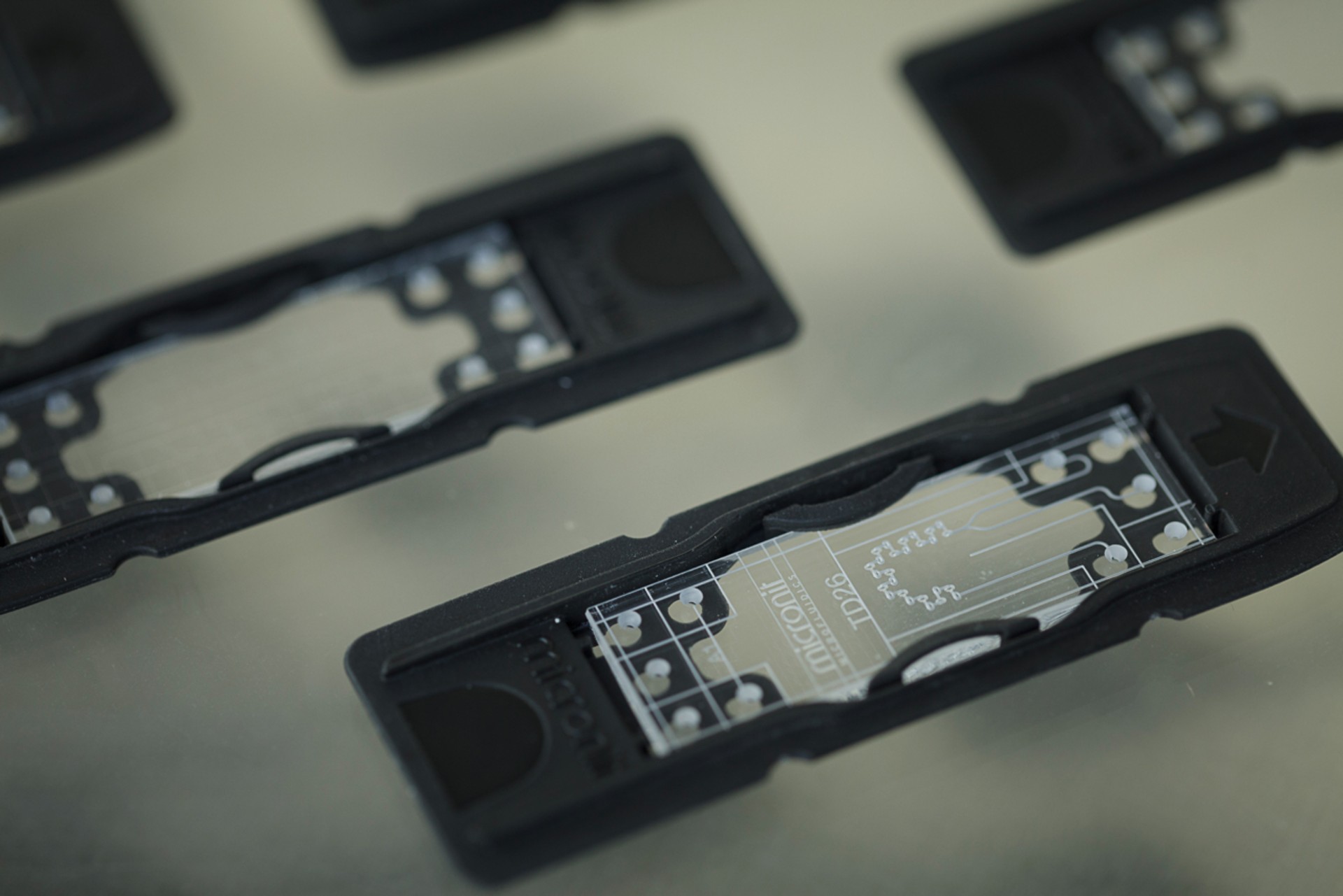Reproduction of specific parts or products can be achieved with several processes. The most common techniques for polymer replication are hot embossing and injection molding. For both processes, a ‘master’ mold is needed that defines the replicated product.
Hot embossing
In terms of cost and time, hot embossing is an efficient microfluidic replication technique for the manufacturing of micro components. In comparison to micromilling, hot embossing allows for the formation of smaller and smoother microstructures in polymer substrates. This technique is suitable for medium-volume manufacturing. Hot embossing uses high pressure and heightened temperatures to transfer the structures from the master into the polymer. The process is carried out in four steps. First, the polymer is heated until it changes from a solid state into a more flexible state. Second, the actual embossing takes place by pressing the mould into the heated polymer substrate. The third step is to let the polymer cool off until it reaches its solid state again after which, in step four, the object is carefully demolded.
Injection molding
Injection molding stands for high-volume polymer replication with very small features and superior surface properties. Here, the polymer is heated until it reaches a fluid state and then injected into the mold. After cooling down, the item is taken out again. This process takes more time than micromilling, but the tolerances are more accurate, as injection molding can reproduce very small, nanoscale structures.
Hot embossing and injection molding, combined with micromilled stamps and molds, are a perfect option for fast prototyping, medium volume production runs, and upscaling of production volumes.
